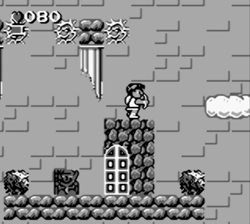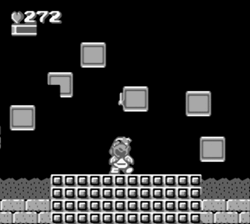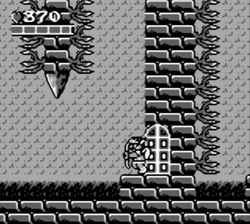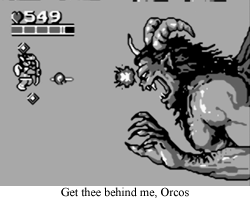 Super Kid Icarus would have been amazing.
Super Kid Icarus would have been amazing.
I feel like Super Mario Bros. 2 defined how Nintendo makes sequels. Which Super Mario Bros. 2 am I talking about? Both! Super Mario Bros. (1) was an unprecedented success that led not only to Nintendo’s dominance of the videogame market, but also roughly ten billion imitators. Run, jump… who cares if we get the physics right, it’s all the same, let’s snipe some of that sweet Mario money (coins?). Thus, Nintendo had to create its own Super Mario Bros. sequel to maintain its grip on “this is how it’s done”. And Super Mario Bros 2: The Lost Levels (let’s just use that title so I don’t have to awkwardly type “J” repeatedly) was born. The Lost Levels was, in essence, a continuation of Super Mario Bros, with (pretty much) the same sprites and physics, just greater and deeper challenges for a population that had already mastered Mario’s first adventure. And… Miyamoto didn’t like it. So when Super Mario Bros. 2 came stateside, it was a totally different game, with a full cast of unique characters, magical dream worlds, and a giant frog instead of a giant turtle. Yes, it was, basically, an “official” rom hack of another game, but this is what America saw as “the second Mario game”. And, of course, it was successful.
And it seems like that trip to Sub-Con set the tone for future Nintendo franchise sequels. Super Mario Bros. 3 returned to “old” Super Mario Bros. gameplay… but with the notable addition of flight and frogs. And completely new sprites. And practically every opponent using new patterns or skills. Super Mario World again changed the game in every conceivable way, and Super Mario World 2: Yoshi’s Island changed so much that it’s barely even considered a proper sequel. Meanwhile, Link went through three very different iterations between The Legend of Zelda, Link’s Adventure, and A Link to the Past. Even “lesser” franchises and characters follow a similar arc, whether it’s Donkey Kong (1) vs. Donkey Kong (’94), or Kirby’s Dreamland (a suck and spit adventure) vs. Kirby’s Adventure (meet the copy ability). While Nintendo is consistent with its franchises offering the same general gameplay across sequels (almost consistent, look forward to the next entry…), there’s often more innovation than iteration than seen in other companies’ franchise sequels. Or, put another way, it’s difficult for the untrained eye to distinguish the difference between a Mega Man 4 and Mega Man 5 stage, while no one is going to mistake a SMB3 world for a SMB1 world. Heck, I think there’s so much nostalgia for Super Mario Bros. 1-1 in later Mario games because we didn’t revisit that same basic layout for, what, twenty years? Where have you been, old friend?
 Kid Icarus: Of Myths and Monsters seems to follow this template. KI:OMAM could easily have been a straight NES-to-Gameboy port (not like the NES original was all that complicated from a graphical or bytes perspective), but, no, like a tiny, gray version of Super Mario Bros. 3, we’ve got a game with all new sprites, all new enemies, and all kinds of interesting gameplay improvements. Remember how every last item is completely unexplained in Kid Icarus? KI:OMAM actually involves NPCs that explain how extra weapons work, where secrets may be hiding, and whether or not that off-color water is lava or a healing spring. As someone that has never seen a Kid Icarus instruction manual, this is a Palutena-send. And, despite the cramped Gameboy screen, it seems like fewer monsters spawn directly atop poor Pit. Hooray! And, even better, you can actually duck without instantly dying, as most platforms are now completely solid, and you can scroll the screen down without repercussions. Everything wrong is right again!
Kid Icarus: Of Myths and Monsters seems to follow this template. KI:OMAM could easily have been a straight NES-to-Gameboy port (not like the NES original was all that complicated from a graphical or bytes perspective), but, no, like a tiny, gray version of Super Mario Bros. 3, we’ve got a game with all new sprites, all new enemies, and all kinds of interesting gameplay improvements. Remember how every last item is completely unexplained in Kid Icarus? KI:OMAM actually involves NPCs that explain how extra weapons work, where secrets may be hiding, and whether or not that off-color water is lava or a healing spring. As someone that has never seen a Kid Icarus instruction manual, this is a Palutena-send. And, despite the cramped Gameboy screen, it seems like fewer monsters spawn directly atop poor Pit. Hooray! And, even better, you can actually duck without instantly dying, as most platforms are now completely solid, and you can scroll the screen down without repercussions. Everything wrong is right again!
And, while the bosses of the original Kid Icarus seemed like mythological (and generally misspelled) names randomly applied to blobs of pixels (how is this smoke monster supposed to be Pandora again?), there is much more of a myths and monsters bend to the creatures of KI:OMAM. “Kid Icarus” absolutely should fight a minotaur, and, look, here’s one at the end of the first stage. And a flying skull with wings might not be the most Grecian thing in the world, but, hey, I’m going to go ahead and say it’s more of a “monster” than that attempt at a dog sprite from the first dungeon of Kid Icarus. And the final boss might not be Medusa, but it is basically the Roman version of Satan. This makes him a tweeeak more threatening than a giant eyeball and its accompanying lazy snake. Dude has horns for days!
 When you put it all together, you get an experience very much like Metroid II: The Return of Samus. Metroid 1 was good, but flawed, with far too many opaque systems and items and Jesus Christ what do I have to do to get an auto-map?! Kid Icarus was very similar in his maiden voyage, and, while his adventure was filled with buttheads, there was a glimmer of a more refined experience in there. Kid Icarus: OMAM is that refined experience. And, more than anything, it’s a fun, “new” sequel that borrows from the old but winds up being a distinctive, excellent experience.
When you put it all together, you get an experience very much like Metroid II: The Return of Samus. Metroid 1 was good, but flawed, with far too many opaque systems and items and Jesus Christ what do I have to do to get an auto-map?! Kid Icarus was very similar in his maiden voyage, and, while his adventure was filled with buttheads, there was a glimmer of a more refined experience in there. Kid Icarus: OMAM is that refined experience. And, more than anything, it’s a fun, “new” sequel that borrows from the old but winds up being a distinctive, excellent experience.
But, for confusing reasons, Kid Icarus: Of Myths and Monsters was never released in Japan. It’s a first party Nintendo game, but it never saw its native shores, only America and Europe. Likely for this reason alone, when Mario, Link, and even Little Mac were all getting their 16-bit makeovers, Pit was left out in the cold. The Hero of Angel Land never saw a Super Kid Icarus, and we’re poorer for it.
If Kid Icarus: Of Myths and Monsters was the template for the future of the Kid Icarus franchise, we lost something special when Pit never ascended with his Nintendo brethren. Super Kid Icarus could have been another Super Metroid, and, heck, if it hit that echelon, it could have chiseled out its own genre. But, no, we are forever denied that beautiful, fictional version of 1994.
But at least we got a pretty good Gameboy game out of it.
FGC #251 Kid Icarus: Of Myths and Monsters
- System: Gameboy. It also saw some Virtual Console love, mostly as a canny way to promote our next FGC entry.
- Number of players: Pit is a solitary hero.
 Favorite Boss: The final battle with Orcos is pretty dang epic, and almost reminds me of Super Kraid. This is something of a major achievement on the Gameboy, even if it’s abundantly obvious that no more than one “part” of Orcos can appear on the screen at one time. Hey, it’s rough being a colossal boss on a system that can barely generate four shades of gray.
Favorite Boss: The final battle with Orcos is pretty dang epic, and almost reminds me of Super Kraid. This is something of a major achievement on the Gameboy, even if it’s abundantly obvious that no more than one “part” of Orcos can appear on the screen at one time. Hey, it’s rough being a colossal boss on a system that can barely generate four shades of gray.- Other Improvements: The three treasures of Angel Land now enhance Pit’s natural abilities, and don’t transform the final stage into a completely other genre. This feels a lot more appropriate than Kid Icarus’s finale.
- Makeover, Makeover: Palutena’s hair is canon gray for this adventure. Yes, it’s a Gameboy game, but she’s rocking the gray locks in instruction manual illustrations, too. This is probably because no one working on the manual finished Kid Icarus, either.
- Did you know? When Orcos appears, he turns Palutena to stone. And all the centurions have been similarly transformed into a more statuesque form. That move made a lot more sense with Medusa…
- Would I play again: The mystique of this game is all wrapped up in what could have been next. The actual game is a step in the right direction, but, like Metroid 2, kind of difficult to revisit after decades of innovations (mostly innovations in screen size). So, while this game is good, no, I don’t think I’ll be playing it again.
What’s next? You know the answer to that one.

The Game Boy sequel definitely had some improvements, but there’s also some stuff that rubs me the wrong way about that game. Mainly that the music is less good and the enemy designs don’t pop out in the same way as they did in the original.
Still, it’s nice not to have to deal with the screen ratchet of death.